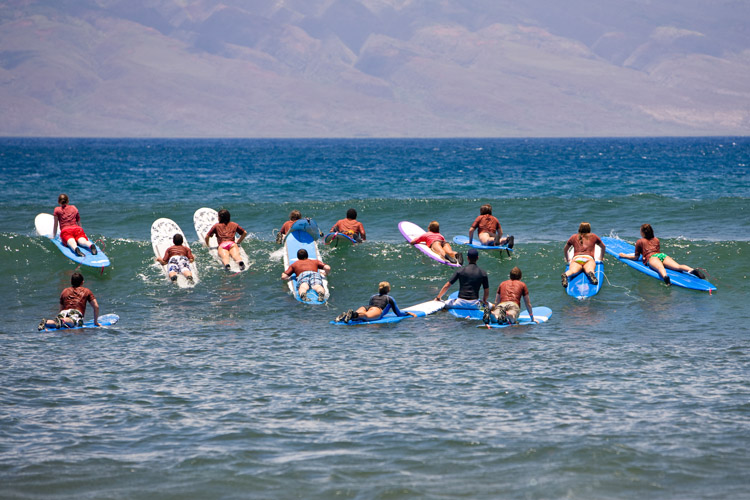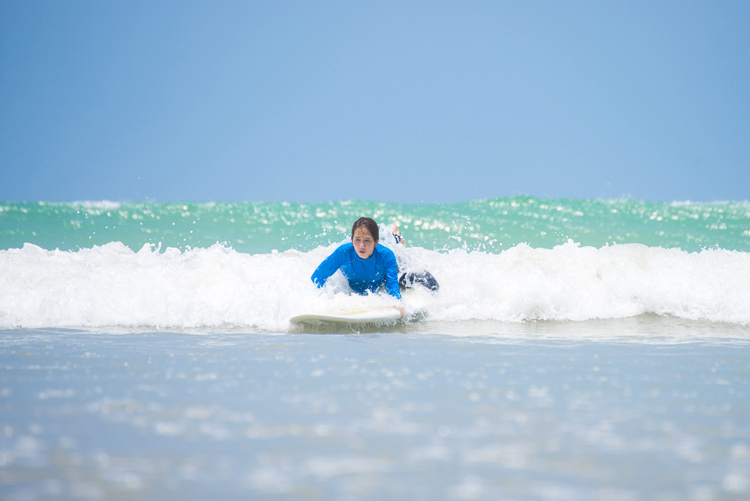How do you catch a wave while surfing? This is probably the first question a beginner surfer will ask when they grab the surfboard and hit the water for the first time.
Catching your first wave is an exciting moment in surfing. The secret is to paddle into a wave with method and synchronization.
Frenetic paddling will not take you anywhere, and in the process, you must include your hands and arms.
When you're catching a wave, you need to get your surfboard moving as fast as possible in the water to match the speed of the wave.
Many novice surfers lose waves because they don't paddle hard enough for them.
If you stay steady, waiting for the incoming wave, you will be hit by its energy, and the wave will continue its path toward the beach.
That is why you must keep the board moving when the wave arrives.
Quite often, beginner surfers tend to believe that they've caught the wave, but they actually haven't.
So, make sure you always add two extra strokes and/or kick your feet a few times before popping up.
The first attempts at surfing can be a bit frustrating, but once you're able to catch a wave, it will only be a matter of time until you stand on the surfboard.

Catching Waves on a Surfboard
Head to beach breaks and wait for the mid-to-low tide, when waves aren't breaking in shallow water and close to the shore.
- Sit on the surfboard outside, where the waves are breaking;
- Watch the swell and, as soon as possible, pick a wave;
- Lie prone on the board and find a comfortable center of gravity on the board;
- If your body is too much forward, the board will nosedive; if your weight is too much backward, you will never catch a wave;
- Look over your shoulder and monitor the wave's traveling speed;
- Arch your back, cup your hands, and start paddling with one arm at a time;
- Make sure each stroke is smooth, long, and effective;
- Try to match your paddling with the speed of the wave;
- When the wave begins to break behind you, keep your eyes on the beach and pop up fast;
- Keep a low stance and ride the wave straight toward the beach;
Extra Tips and Suggestions
Knowing how to pick the right wave is a paramount skill in surfing.
If you paddle for the worst wave of the set, you will lose priority in the lineup and end up riding whitewater toward the beach or wiping out big time.
A beginner will need to learn how to catch a wave before trying to stand up on the surfboard - one thing leads to another.
So, you will only be qualified to pop up after catching a dozen rollers in a prone position.
Once you master the wave-catching technique, you're ready to paddle for a wave in an angle direction so that you can enjoy a long ride down the line, i.e., almost parallel to the beach.
Initially, beginners don't know in which direction and where the wave is breaking, but practice and surf literature will guide them.
Remember: the goal of surfing is to ride the unbroken part of a wave just in front of the whitewater.
Do you want to learn how to surf?
Get a beginners' surfboard, discover 10 things you should know before learning how to surf, and take a look at our "Beginners' Guide to Surfing."
